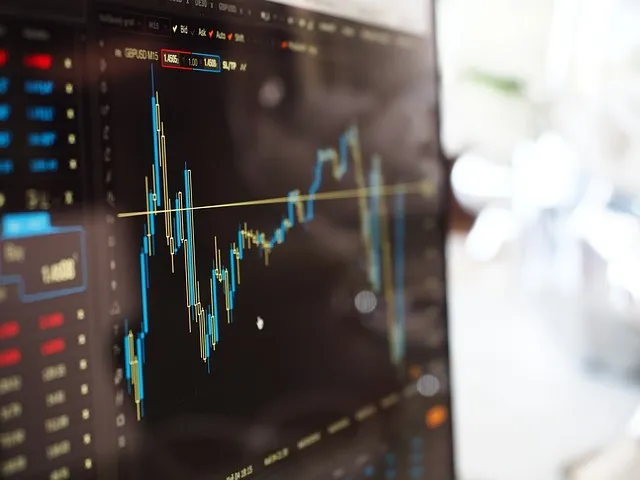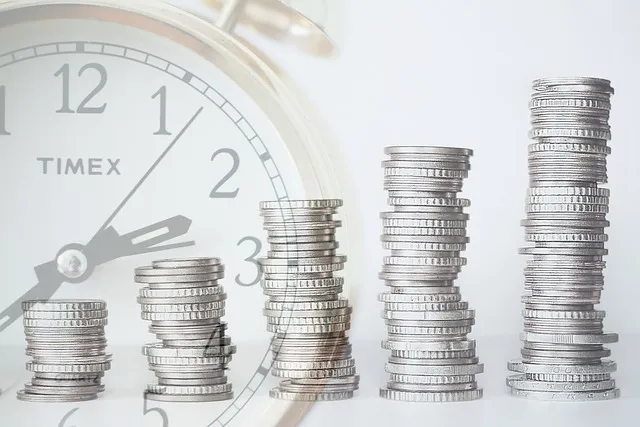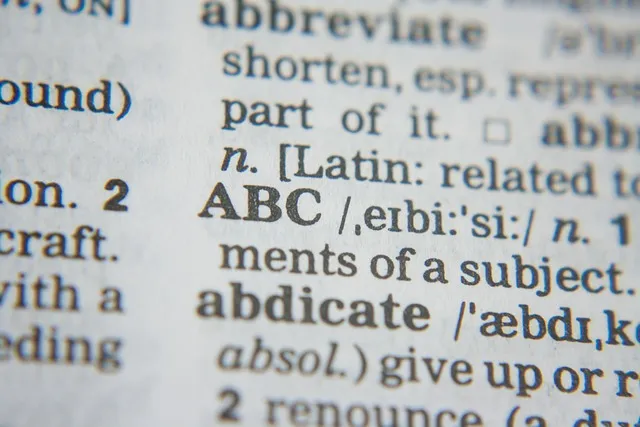
Contents
It lets you go long and short while multiplying your profits — what’s not to love about margin trading? Although it looks like a sweet deal, take a moment to learn what margin trading is all about. Our guide to this type of trading will equip you with the necessary lingo and practical advice to get you started margin trading!
Key Takeaways
- Margin trading involves borrowing funds with your initial investment as collateral to control a larger position. This mode of trading increases both returns from successful trades as well as losses.
- Margin trading is popular in cryptocurrencies, too. Centralized crypto exchanges offer leverage from 2x up to 100x.
- The obvious benefit of margin trading is the lower initial investment requirement. However, it does not make it a more suitable option for beginners because it carries higher risks and requires position and equity management on top of watching the market.
What is margin trading?

Financial markets have devised modes of trading that go beyond simple give and take. What if you could borrow the funds to buy or sell and receive the gains in proportion to the amount you borrowed? That would be so-called margin trading.
Plainly put, margin trading is a method of trading assets using funds borrowed from a broker. This allows traders to increase their buying power and potentially amplify their profits. The ratio of borrowed funds to the traded amount acts like leverage, so it is also known as leveraged trading.
Here is how it basically works: a trader opens a margin account with a broker and deposits a certain amount of funds. The broker provides additional funds, allowing the trader to buy more assets than they could with just their own funds. From their side, the trader is required to maintain a minimum balance in their account. If the value of the assets in the account falls below the minimum, the trader will be required to deposit more funds to cover the losses or their collateral will be sold.
Due to the lower capital requirement, margin trading might seem like a place to start. However, it is not recommended for beginners since in addition to trading one has to manage the collateral. Margin trading can magnify both gains and losses, so it carries a higher level of risk compared to traditional trading.
Margin trading vs. Spot trading
In comparison to the most basic mode of trading on the spot markets, margin trading is a step up in complexity. Spot trading is the traditional way of buying and selling assets, where transactions are settled immediately (on the spot) at the current market price. Traders use their own funds to purchase assets, without borrowing money or using leverage. In margin trading, traders can borrow funds from the exchange or other users to increase their buying power. This allows them to take larger positions than their initial capital would allow.
Spot trading is considered less risky compared to margin trading, as the trader is not exposed to the potential losses from leverage. It also means the profit potential is limited to the asset’s price movements. Leveraged trading comes with increased risk, as losses can exceed the initial investment due to leverage. It also involves paying interest on the borrowed funds and maintaining a minimum margin requirement.
Margin trading vs. Futures
What about more complex modes of trading, like ones that involve derivatives and contracts, such as futures? There is also a host of other differences, so let’s briefly review them.
Usually, margin trading involves an arrangement to borrow funds in order to increase buying power for trading assets on the spot market. Traders can go long (buy) or short (sell) assets with borrowed funds, using leverage to amplify potential profits or losses. On the spot market, the trades are settled immediately at the current market price, and traders pay interest on the borrowed funds.
Futures trading involves entering into a contract to buy or sell an asset at a predetermined price at a specified future date. Traders do not need to borrow funds but they are likewise required to deposit an initial margin or collateral to open a position. Futures trading allows traders to speculate on the future price movements of assets without owning the underlying asset.
Curiously enough, derivatives trading and leveraged trading are not mutually exclusive but due to the compounding risks, it is not a common combination.
How does margin trading work?

We have already touched upon the process behind margin trading but let’s see how it works with a more concrete example.
Let’s say you have $1,000 worth of BTC in your trading account. Instead of using only your $1,000 to spot trade, you decide to leverage your position by margin trading with a 2x leverage ratio.
From here, margin trading would look like this:
- With a 2:1 leverage ratio, you can borrow an additional $1,000 worth of BTC, making your total buying power $2,000. The initial margin requirement is the minimum amount you need to deposit to open the position, which in this case would be $1,000.
- You use your BTC and borrow an additional $1,000 worth of it.
- If BTC’s price increases by 10%, your purchase is now worth $1,100, totaling $1,100 x 10 = $11,000.
- Since you only invested $1,000 of your own BTC, your profit would be (current value of BTC) - (borrowed funds) - (initial investment) = $1,000 worth of BTC.
- Keep in mind that you may need to pay interest on the borrowed funds and trading fees.
Can you margin trade crypto?
At this point, it may be already obvious but yes, many cryptocurrency exchanges offer margin trading services. After all, as a mode of trading, margin trading is not limited by the kind of asset involved.
Crypto margin trading platforms can be regionally restricted and offer a limited variety of assets. Before signing up for any of these, do your homework and learn what exactly you can trade and where. We suggest you keep reading our guide for tips and pointers!
Useful margin trading terms

As is often the case with trading, there is jargon that is essential to learn beforehand. The most important terms to understand margin trading are as follows:
- Margin Level: the ratio of equity to margin, expressed as a percentage. It is calculated as (Equity / Margin) x 100. A higher margin level indicates a lower liquidation risk, while a lower margin level may lead to a margin call or liquidation.
- Initial Margin: the minimum amount of funds required to open a leveraged position. It is set by the broker or platform and represents a percentage of the total position value that the trader must provide as collateral.
- Maintenance Margin: the minimum amount of equity that has to be maintained in a margin account to keep a leveraged position open. If the equity falls below the maintenance margin level, a margin call may be issued.
- Margin Call: a notification from the broker to add more funds to the trading account when the equity falls below the maintenance margin level. Failure to meet a margin call may result in liquidation of the position.
- Liquidation in margin trading refers to the process where a broker closes out a trader’s positions to cover the losses when the account’s equity falls below the maintenance margin level. There is usually some time between a margin call and liquidation for the trader to cover the losses they can. If they are not able to, the broker sells off the trader’s collateral at the current market price to protect themselves from further losses.
- Isolated Margin: refers to a margin trading mode where the margin allocated to a specific position is separate from the overall margin balance. This helps prevent losses from one position from affecting the margin available for other positions.
- Cross-Margin: a margin trading mode where the margin balance is shared across all positions in the account. Profits and losses from one position can offset those of other positions.
Top Crypto margin trading platforms
Most popular: Binance

The largest cryptocurrency exchange by trading volume is Binance, and it is in the number one spot for a reason. Since its launch in 2018, Binance has been introducing all conceivable trading features, margin trading included. By now, they offer leveraged trading for hundreds of cryptocurrency pairs.
The maximum available leverage on Binance is 10x. In addition to trading fees, you will also need to pay annual interest on the borrowed collateral, ranging from 1.5% on popular cryptocurrencies to 70% on stablecoins. Binance is widely globally available except for some jurisdictions (like the U.S.).
Highest leverage: OKX
The OKX exchange is Binance’s close competitor as it follows a similar business model and has been offering leveraged trading for years. The key difference here is that OKX offers leveraged trading for derivatives instead of the spot market.
Here you can push the leverage ratio as high as 100x, although the variety of cryptocurrencies and pairs is more limited. Since you will be dealing with derivatives, owning the underlying asset is not a must. The fee schedule is largely the same: in addition to trading fees, mind the annual interest rate on the collateral.
Trade Leveraged Tokens on Bybit
Some cryptocurrency exchanges offer an alternative to leveraged trading that lets traders use the leverage without the risk of liquidation. These are leveraged tokens, backed by a contract that tracks a long or short position in the specified asset.
Leveraged tokens are not exclusive to Bybit but this trading platform has decent liquidity and volumes in comparison to its competitors. Bybit offers 2x and 3x leverage on long and short tokens which then can be traded on the spot market or as a perpetual contract. Depending on the market, trading or redemption fees apply.
Safe and regulated in the U.S.: Kraken
One of the trading platforms that serves customers in the U.S. and is overall reliable is Kraken. It offers up to 5x leverage on positions but lets traders open them indefinitely as long as margin requirements are met.
Prepare to do the math to understand how much of your revenue will turn into profit after accounting for all the Kraken fees. They are about as much as 0.02% for opening a position and rollover every 4 hours, plus the normal trading fee.
If you are looking for more risks to take, going for Kraken might be too much of a hassle for too little leverage for you but it is a great one-stop shop still available to the US residents.
Pros and cons of crypto margin trading

Crypto margin trading can be a powerful tool for experienced traders looking to maximize their gains in digital assets, but it comes with significant risks that should be carefully considered before engaging in margin trading.
Benefits of Bitcoin margin trading
- Leverage lets traders increase their trading positions with borrowed funds, potentially boosting profits.
- Enables traders to profit from both rising and falling markets by short-selling assets.
- Provides a way to hedge against price fluctuations and manage risk in volatile crypto markets.
- Margin trading can increase market liquidity by facilitating more trading activity.
- Allows traders to diversify their investment portfolio and exposure to different assets.
Risks of leveraged trading
- Margin trading involves a high level of risk due to the amplified losses that can occur with leverage.
- Traders may face margin calls if their account equity falls below the required maintenance level, leading to liquidation.
- Borrowing funds for margin trading incurs interest costs, which can eat into profits and exacerbate losses.
- Crypto markets are highly volatile, increasing the risk of significant losses in margin trading.
- The crypto market is relatively unregulated, exposing traders to potential fraud and manipulation risks.
Conclusion
Margin trading is not the most complicated way to make money by trading but it’s certainly not the simplest. If you know what you are doing and don’t neglect to protect yourself from contingencies, margin trading can become your preferred way to trade!
Craving to learn more about the crypto market? Then subscribe to ChangeHero on X, Facebook, and Telegram! Once you want to dive into another topic, please feel most welcome to our blog.
Frequently Asked Questions
Is crypto margin trading profitable?
Crypto margin trading can be profitable for skilled traders who understand the risks involved and have a solid trading strategy. However, crypto margin trading also carries a high level of risk due to leverage, and inexperienced traders may incur significant losses. It is essential to conduct thorough research and practice risk management when engaging in crypto margin trading.
Is crypto margin trading legal?
The legality of crypto margin trading varies by country and region. Some countries have strict regulations or outright bans on crypto margin trading while others have more lenient or ambiguous laws. Traders must understand and comply with the legal requirements in their jurisdiction before engaging in crypto margin trading to avoid any potential legal issues.
What is 10x leverage in crypto?
10x leverage in crypto refers to borrowing funds to amplify the potential returns (or losses) on a trade. With 10x leverage, a trader can control a position of a size that is 10 times larger than their actual account balance. This means that gains or losses on the trade will be magnified by 10 as well.
How to do crypto margin trading?
- Choose a cryptocurrency exchange that offers margin trading. Open an account on the exchange and complete the necessary verification process.
- Deposit funds into your account. Make sure to have enough funds to cover the margin requirements.
- Navigate to the margin trading section on the exchange platform. Select the cryptocurrency pair you want to trade with leverage. Choose the leverage level you want to use (e.g., 2x, 5x, 10x). Enter the amount you want to trade and place your order.
- Monitor your trade closely, as margin trading involves higher risk due to leverage.
- Close your position when you achieve your desired profit or if the trade moves against you to limit potential losses.
Remember to always use proper risk management techniques and start with a small leverage level if you are new to margin trading.
What is the margin in trading crypto?
Margin in trading crypto refers to the amount of funds that a trader borrows from a cryptocurrency exchange to increase their buying power and potential profits. By using margin, traders can trade with more funds than they have, amplifying both gains and losses. Traders are required to maintain a certain level of equity in their account to cover potential losses, known as the margin requirement. If the full margin trading account ever falls below this level, a margin call may be issued, requiring the trader to deposit additional funds or their positions will be forcefully closed.
Is margin trading crypto risky?
Yes, margin trading crypto is considered risky due to the amplified potential for gains and losses. While margin trading can magnify profits when the market moves in the trader’s favor, it also increases the risk of significant losses if the market moves against them. Additionally, margin trading requires traders to maintain a certain level of equity in their accounts to cover potential losses, which can lead to margin calls and liquidation if not managed properly. Traders should be aware of the risks involved in margin trading and only trade with funds they can afford to lose.
What is the best margin trading cryptocurrency?
The best margin trading cryptocurrency can vary depending on individual preferences, trading strategies, and market conditions. Some popular cryptocurrencies for margin trading include Bitcoin (BTC), Ethereum (ETH), Ripple (XRP), and Litecoin (LTC). Traders need to conduct thorough research, consider factors such as liquidity, volatility, and trading volume, and choose a cryptocurrency that aligns with their risk tolerance and investment goals.
What is a margin trade in crypto?
A margin trade in cryptocurrency refers to the practice of borrowing funds from a broker or exchange to increase the size of a trader’s position beyond what their initial capital would allow. In margin trading, traders use leverage to amplify potential profits (or losses) on a trade. By putting up a percentage of the total trade value as collateral (margin), traders can control a larger position size in the market.
Can I margin trade crypto in the US?
Yes, margin trading of cryptocurrencies is available in the United States on certain platforms that offer this service. However, it is important to note that margin trading of cryptocurrencies comes with regulatory requirements and restrictions in the US. Traders must comply with the regulations set by the Commodity Futures Trading Commission (CFTC) and adhere to the rules of the platform they are margin trading positions on. It is recommended to conduct thorough research and understand the risks involved before engaging in margin trading of cryptocurrencies in the US.
Is there margin trading with cryptocurrency?
Yes, there is margin trading available with cryptocurrencies on various cryptocurrency exchanges and platforms. Margin trading allows traders to borrow funds to increase their trading position and potentially amplify their profits (or losses).
What is the best crypto platform for margin trading?
Choosing the best crypto platform for cryptocurrency margin trading depends on various factors such as the user’s trading preferences, experience level, desired features, and security measures. Some popular cryptocurrency platforms known for margin trading include:
-
Binance: Binance is one of the largest cryptocurrency exchanges globally and offers a wide range of cryptocurrencies for margin trading with leverage options.
-
OKX: OKX is known for its advanced trading features, including margin trading, and offers a variety of trading pairs with different leverage options.
-
Kraken: Kraken is a reputable cryptocurrency exchange that provides margin trading services with a focus on security and regulatory compliance.
-
Bybit: Bybit is a derivatives exchange specifically designed for leveraged trading, offering perpetual contracts with high-leverage options and leveraged tokens.
How much does margin trading crypto cost?
Margin trading in the cryptocurrency market typically incurs fees such as interest rates on borrowed funds, funding fees for holding leveraged positions, and trading fees based on the trade value. Traders may also face liquidation fees if their positions are liquidated and spread costs due to price differences.
What is the margin level in crypto trading?
The margin level in crypto trading is a metric that shows the ratio of a trader’s equity to the used margin. It is calculated as (Equity / Used Margin) * 100%. A higher margin level indicates that the trader has more available margin to withstand market fluctuations. In comparison, a lower margin level suggests a higher liquidation risk if the market moves against the trader. Traders should aim to maintain a healthy margin level to avoid liquidation of their positions.
What is a good margin ratio in crypto?
A good margin ratio in crypto trading is typically considered to be above 100%. This means that the trader’s equity is more than the used margin, on open positions providing a buffer against potential losses and reducing the risk of liquidation. Traders often aim to maintain a margin ratio above 100% to ensure they have enough margin to cover market fluctuations and avoid being forced to close their positions prematurely.
How do you leverage trade in crypto?
To begin leveraged trading in crypto, choose a reputable exchange, deposit funds, select your desired cryptocurrency and leverage level, place your trade, and monitor it closely. Remember that leverage can amplify gains and losses, so trade cautiously and consider risk management strategies.
Disclaimer
This article is not a piece of financial or investment advice. When dealing with cryptocurrencies, remember that they are extremely volatile and thus, a high-risk investment. Always make sure to stay informed and be aware of those risks. Consider investing in cryptocurrencies only after careful consideration and analysis of your own research and at your own risk.






